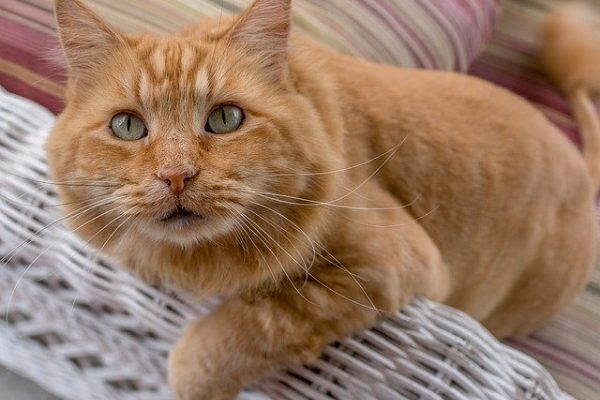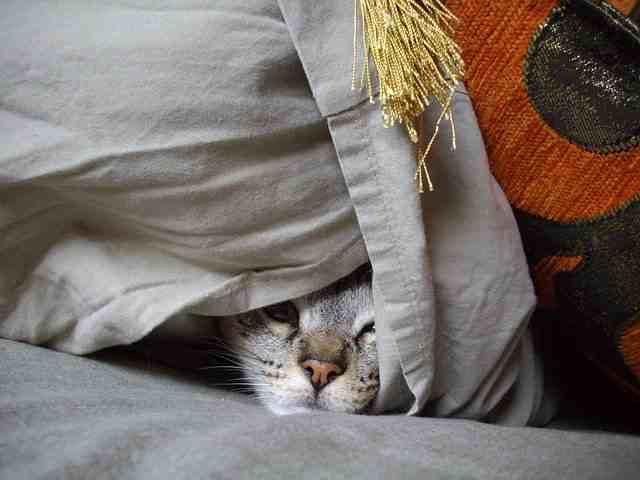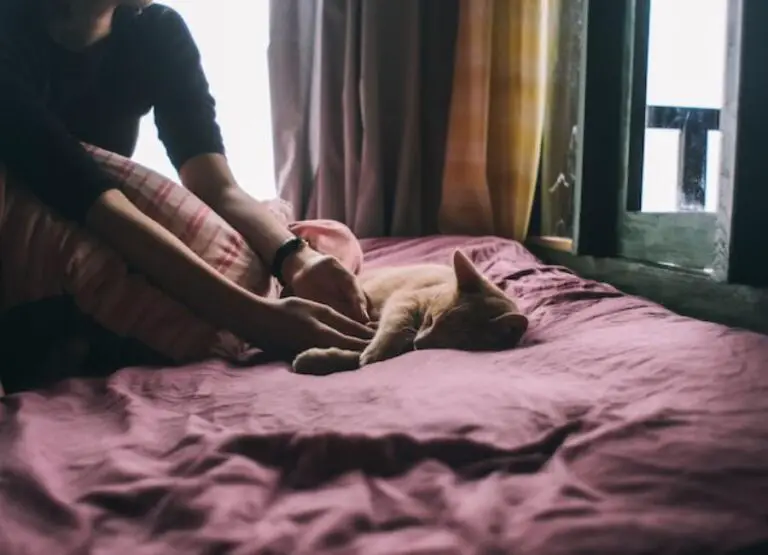How Big Do Ragdoll Cats Get: Height, Weight, Size & More
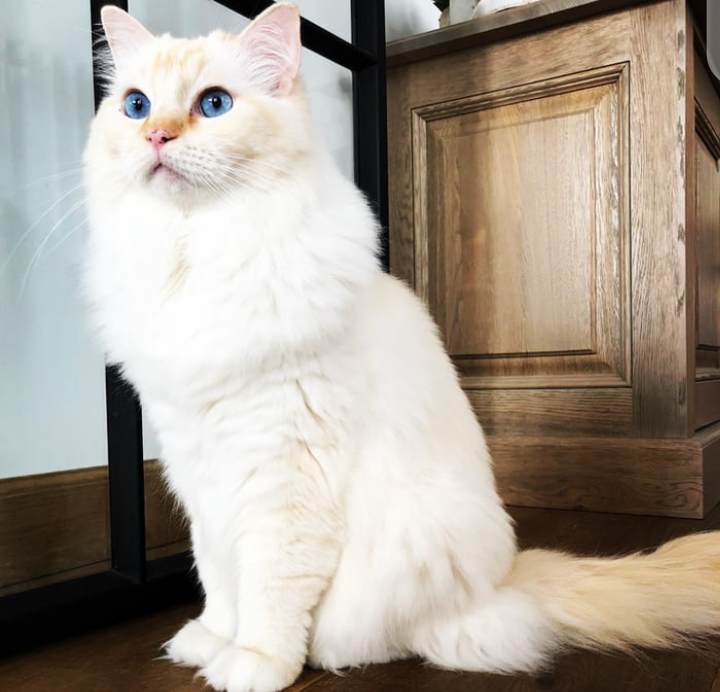
Ragdoll cats are large-medium cats, but how big do ragdoll cats get, and what factors can influence their sizes and growth rate? Find the answers below and more about ragdoll size.
Ragdolls are a breed of domestic cats with distinctive appearances and personalities.
They’re large, long-haired cats with calm temperaments. Like most cats, they enjoy spending time in the sun.
A ragdoll is a large-medium-sized cat, typically weighing 10 to 20 pounds or more in adulthood. This weight range is on the larger side for a house cat.
How Big Do Ragdoll Cats Get
Typically, a well-fed and healthy ragdoll cat, on average, has an overall height of 9 – 11 inches (23 – 28 cm), an average body length of 17 – 21 inches (43 – 53 cm), and average body weight between 8 – 20 lb (3.6 – 9.1 kg) and has a typical lifespan of 12 – 17 years or more.
Ragdolls come in three different types: standard, bicolor, and color point.
The average height of a standard ragdoll ranges from 10 to 12 inches tall at the shoulder when full-grown.
In contrast, bicolor and color point ragdolls tend to be slightly smaller than adults.
Find out more if ragdoll cats eat a lot more than average cats!!!
Quick break down of ragdoll cat growth chart
Ragdolls reach maturity three to four years later than other adult cats.
During the first 12 weeks of its life, a Ragdoll kitten will grow at a similar rate as a domestic cat.
At 8 weeks of age, a Ragdoll kitten will weigh between 1 pound, 13 ounces, and 2 pounds, 3 ounces.
They should have grown to a weight of 3 to 4 pounds by the 12-week mark.
At the age of five months, a Ragdoll kitten will most likely go through a growth spurt, so be prepared to increase their feeding.
Ragdoll kittens acquire an average of one pound each month until they reach twelve months of age.
Most kittens mature between the ages of 8 and 16 months, depending on the breed.
Ragdoll cats, on the other hand, do not achieve full size until they are three to four years old.
Ragdoll cat weight growth chart
| Ragdoll Cat Age | Average Weight (In Pounds) |
| 1 month old | 0.75 to 1.5 lbs |
| 2 months old | 1.5 to 3 lbs |
| 3 months old | 3 to 4 lbs |
| 4 months old | 4 to 5 lbs |
| 5 months old | 5 to 6 lbs |
| 6 months old | 6 lbs + |
| 1 to 16 years + | 8 to 20 lbs + |
The average weight of a Ragdoll cat
Here is the summary of the average weight of a male and female ragdoll cat:
- A healthy male ragdoll cat should weigh between 8 and 20 pounds (3.6 – 9.1 kg) or more.
- A healthy and well-fed female ragdoll cat should weigh between 8 and 15 pounds (3.63 and 6.80 kg) on average or more.
The average height of a Ragdoll cat
Here is the summary of the height of a male and female ragdoll cat:
- A fully developed male ragdoll cat should reach a height of 9 – 11 inches (23 – 28 cm) or more.
- A fully developed and healthy female ragdoll cat should reach a height of 7 to 9 inches (17.78 to 22.86 cm) or more.
The average body length of a Ragdoll cat
Here is the summary of the body length of a male and female ragdoll cat:
- A fully developed male ragdoll cat should reach a body length of 17 – 21 inches (43 – 53 cm) or more.
- A fully developed and healthy ragdoll cat should reach a body length of 17 and 19 inches (43 and 48.26 cm) or more.
| Age | Length | Units |
| 8 weeks | 7 to 9 | Inches |
| 3 months | 8 to 10 | Inches |
| 6 months | 10 to 12 | Inches |
| 9 months | 12 to 14 | Inches |
| 1 year | 14 to 16 | Inches |
| 2 years + | 16 to 18 + | Inches |
Find out how much to feed ragdoll kittens that aren’t bad!!!
Factors that influence the growth of Ragdoll cats
Here are some common factors that might influence the development and growth of a Ragdoll cat:
Genetics or Breed
When estimating the development rate of a Ragdoll cat, you must consider the genetics and DNA that each cat gets.
Some cats are naturally smaller than others, and the size of a Ragdoll’s offspring is mostly influenced by the size of their parents.
The runt of the litter
Continue reading if you don’t understand what the runt of the litter is.
A runt is a sibling that is considerably smaller or weaker than the other siblings in a litter (a group of siblings from the same mother).
A runt in a litter now faces obvious disadvantages as a result of its tiny size, including problems competing with its siblings for survival and the possibility of rejection by its mother.
As a result, if your ragdoll kitten is the runt of the litter, you might expect a slower growth rate than the others.
The last to come is usually the runt, who will always need special care and high-quality food.
Wrong Diet
Ragdolls have a rapid growth rate that must be maintained by enough nutrition.
This means that kittens must eat the correct foods in the right amounts in order to develop properly.
Furthermore, the veterinarian will keep an eye on the kitten and determine the proper daily feeding amount based on its weight.
Ragdoll cats might benefit from specific vitamin supplements in addition to a proper diet to maintain their development spurt.
The optimum supplement alternatives for the kitten will be determined by a veterinarian.
People choose kibbles because they are less expensive, not because they are the best.
You should always consult your veterinarian about the proper food for your ragdoll cat.
Diseases
This is a critical aspect that may have an influence on your ragdoll’s development.
Ragdoll cats are known to have a variety of health issues that might affect their growth.
Ragdoll cats have been linked to a number of health problems, many of which have an impact on their growth.
Hairballs are a typical health issue we see in our ragdolls, and they’re caused by improper or infrequent grooming.
When you don’t groom your ragdoll, he or she will groom themselves since the dead skin or hairs will cause them to scratch and lick the same hand with which they scratched, resulting in their own hair being consumed.
They produce hairballs as a result of their inability to digest their hair, which can lead to other issues such as vomiting and diarrhea.
When your ragdoll is sick, they may not be able to feed properly, causing their growth to be stunted or delayed.
So, if your ragdoll starts acting oddly, make an appointment with your veterinarian; if you ignore it, your ragdoll’s growth may be affected.
Parasite attacks
Ragdoll cats’ growth is hampered by parasites and worms, which can prevent kittens from growing and developing normally.
Fleas, tapeworms, hookworms, ticks, mites, roundworms, and other parasitic worms, for example.
These parasites should be kept away from your Ragdoll as much as possible.
Deworm your Ragdoll on a regular basis, and keep an eye on the skin of your Ragdoll when grooming.
Find out more about how to take care of a ragdoll cat!!!
Ragdoll cat growth spurts
Overfeeding or altering a ragdoll’s diet are the most prevalent causes of ragdoll growth spurts.
They can also happen when you introduce a new ragdoll to a new environment.
Ragdoll growth spurts can also happen when a ragdoll is recovering from an extended sickness.
Ragdolls go through development spurts until they reach the age of four when they attain their mature size.
Causes of Ragdoll cat growth spurts
Some ragdoll cat growth spurts, however, are more prominent or visible for a variety of reasons which may include the following:
Environmental changes
When you receive a new ragdoll, the environment in which it was born changes, and as a result, your ragdoll’s growth may be slowed.
You’ll be the one to get your ragdoll used to its new surroundings.
Due to environmental variables such as temperature, development appears to come to a halt during these transition stages.
When your ragdoll has calmed down and has become one with the surroundings with your aid. There is a noticeable rise in ragdoll growth at this time.
Changes in quality of food
Because you’re giving your ragdoll low-quality food, you might not be able to see his growth spikes.
Ragdoll growth spurts necessitate high-quality food on a regular basis.
Do you think you’ll notice a major difference in ragdoll growth spurts if you adopt a ragdoll from a friend who doesn’t care what he or she feeds the ragdoll and then give it a nice, high-quality ragdoll food?
Growth spurts in ragdolls are linked to high-quality or specially formulated ragdoll food.
A multitude of reasons, including being the runt of the litter, might trigger ragdoll growth spurts.
Recovering from a sickness
When a ragdoll is really unwell, all growth and development cease for the time being; the ragdoll may even shrink and lose weight.
As time passes, you continue to provide treatments as prescribed by the veterinarian, and your ragdoll enters the recovery stage after it is free of sickness.
You use a number of ways to get your ragdoll back up and running during the healing stages, including replenishing its food.
Then, once you’ve recovered, every growth activity resumes, and because you increased or increased your ragdoll meal during the healing phases, you’ll see noticeable ragdoll growth spurts, including weight gain, between 2 and 4 months after you’ve recovered.
When Do Ragdoll Cats Stop Growing
Ragdolls stop growing around the age of 3 to 4 years; all developmental activities in a ragdoll come to an end at this time, and only then can you say your ragdoll is fully grown or has stopped growing.
Before this age, several things change around a ragdoll, most notably the continuous growth in coat color intensity, steady increase in weight, and slow increase in height and length.
Find out more about when does ragdoll cats stop growing!!?
Do Ragdoll cats stay small?
Ragdoll cats don’t stay little for long, and they develop and mature a little slower than other cat breeds, but they make up for it in size and weight.
A Ragdoll cat outgrows other cats at the age of 12 weeks and goes through a growth spurt that lasts until the age of 5 months.
They’ll keep maturing and growing until they’re four years old.
Ragdoll kittens don’t remain little for long. They take a bit longer to complete.
Why Is My Ragdoll So Small
If your Ragdoll is under one year old, they may still be little.
Between the ages of 2and 4 years, some kittens reach their maximum height.
At times, growth is gradual and steady, while at other times, it is fast.
They may be the litter’s runt if they are still not developing after 2-4 years.
Wrapping up on how big do Ragdoll cats get
The Ragdoll is a large, gentle, and docile breed of cat that is known for its love of people.
The average weight for this breed is 8-20+ pounds, with males being larger than females.
They are one of the heaviest breeds of domesticated cats, next to the Maine Coon Cat.
The breed was developed in the 1960s by Ann Baker, a breeder in Riverside, California.
It’s said that her original intention was to create a cat with non-aggressive tendencies (perhaps due to having grown up with bobcats), long hair, and no fear of water.
So how big do ragdoll cats get? On average, they grow between 8-20 pounds, but some can reach upwards of 20+!

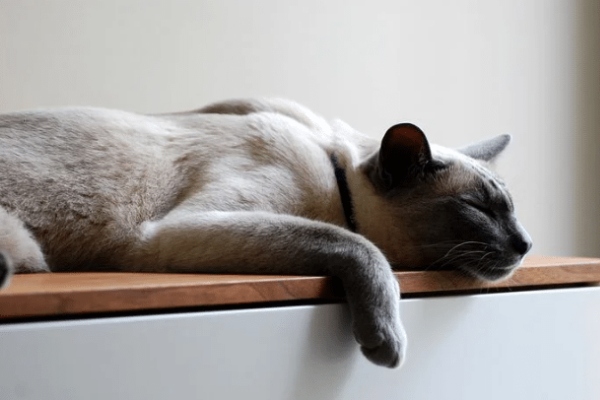
![When Do Cats Sleep The Most [Answered] When Do Cats Sleep The Most](https://petcreeks.com/wp-content/uploads/2023/10/keenan-barber-M7GJFakZObA-unsplash.jpg)
